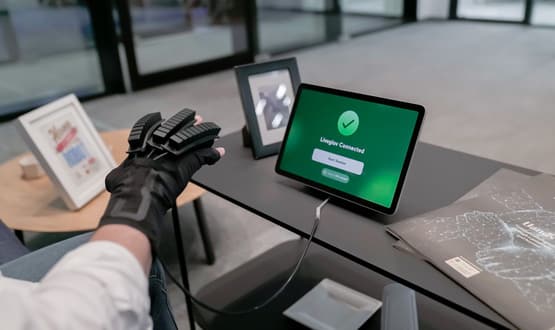US healthcare IT looks kinda familiar
- 18 November 2003
In a second article on healthcare IT systems in America, Andrew Harrison reports from the 650-bed Lenox Hill Hospital in New York, a teaching hospital affiliated with New York University, where he finds that pizza plays an important role in clinical engagement…
We tend to think of the US as being more advanced in IT development, but when I visited Lenox Hill Hospital this summer staff were dealing with problems and challenges that will seem familiar to healthcare IT people in the UK.
The hospital’s Invision program developed by Siemens is 15 years old and DOS based, so one year ago the hospital’s management decided to embark on a $20 million computer upgrade.
The old system performs patient tracking and manages booking of blood tests and radiology. However there is no facility for storing discharge summaries, outpatient clinic booking or managing outpatient prescriptions.
Inpatient prescriptions follow an arduous semi-automated path: The doctor writes a drug on the chart at the bedside. It is faxed by ward staff to the pharmacy, where it is typed into a computer. This performs a few simple checks, such as looking for dangerous drug interactions, and then controls a robot which picks a box from the storage area.
The hospital wanted a new system which would be Windows based, more user friendly and have wider capabilities.
Managing the change is the director of medical applications, Dr Ben Stein, who prior to studying medicine worked in the IT sector for Oracle. He now has a contract which includes shifts as a doctor in the emergency department, but allocates most of his time to working on the computer system.
He explained that the hospital evaluated six of the most comprehensive packages on the market; those produced by: Cerner, Eclipsys, GE, HBOC, IBM and Siemens.
The old system performs patient tracking and manages booking of blood tests and radiology. However there is no facility for storing discharge summaries, outpatient clinic booking or managing outpatient prescriptions.
Inpatient prescriptions follow an arduous semi-automated path: The doctor writes a drug on the chart at the bedside. It is faxed by ward staff to the pharmacy, where it is typed into a computer. This performs a few simple checks, such as looking for dangerous drug interactions, and then controls a robot which picks a box from the storage area.
The hospital wanted a new system which would be Windows based, more user friendly and have wider capabilities.
Managing the change is the director of medical applications, Dr Ben Stein, who prior to studying medicine worked in the IT sector for Oracle. He now has a contract which includes shifts as a doctor in the emergency department, but allocates most of his time to working on the computer system.
He explained that the hospital evaluated six of the most comprehensive packages on the market; those produced by: Cerner, Eclipsys, GE, HBOC, IBM and Siemens.
The criteria for assessing them were: cost, previous track record, functionality and technical ease of installation. Each was investigated further by visiting sites which already used it.
Eventually they chose the system produced by Eclipsys. Dr Stein’s only reservation is that it is the smallest of the companies and may therefore have lower resources to carry out future enhancements.
The system is browser-based and run from a server off-site. As the hospital has a wireless network doctors will be able to access it either via fixed terminals or through small portable laptops.
Dr Stein is keen to foresee problems and ideally deal with them before they arise. He has regular meetings with clinical staff in order to ensure that they are involved with the decisions. Initially attendance was low but he managed to boost this by providing pizza!
Some of the doctors are very negative to the idea of change. To solve this his team have had a policy called "Adopt a Doc" in which one of them is assigned to specific doctors and talks through their concerns.
Eventually they chose the system produced by Eclipsys. Dr Stein’s only reservation is that it is the smallest of the companies and may therefore have lower resources to carry out future enhancements.
The system is browser-based and run from a server off-site. As the hospital has a wireless network doctors will be able to access it either via fixed terminals or through small portable laptops.
Dr Stein is keen to foresee problems and ideally deal with them before they arise. He has regular meetings with clinical staff in order to ensure that they are involved with the decisions. Initially attendance was low but he managed to boost this by providing pizza!
Some of the doctors are very negative to the idea of change. To solve this his team have had a policy called "Adopt a Doc" in which one of them is assigned to specific doctors and talks through their concerns.
Ironically many of the resistant doctors do not even use the current computer system, so it seems that they may be against having to use computers at all, rather than the change itself.
Other problems have been more technical. The browser software is sometimes slow to respond, perhaps involving a three second delay after user input. Dr Stein worries that the cumulative delay for a number of tasks may become a serious obstacle to its smooth operation. His nightmare is a repeat of the situation at Cedars Sinai Hospital in California where doctors boycotted a new computer system altogether. So he is working hard with Eclipsys to improve performance.
Initial plans to upgrade the pharmacy system involved using software from another company. However he has now decided that this would probably be a mistake as it brings in the problem of interfacing them. Therefore the pharmacy will also be programmed by Eclipsys, even though this module is still under development.
A major difference between healthcare in the UK and US, of course, is that in the US it is financed through health insurance companies. One implication of this is the huge administrative burden of correctly assigning costs. Therefore billing systems to deal with this are often the starting point for IT systems. Lenox Hill upgraded to a Lawson billing system one year ago.
However issues about billing can sneak into other discussions. For example patient care is clearly improved if a computer system is efficient for booking follow up appointments, but this is given extra impetus because follow up clinics are a useful way of generating income for the hospital.
Despite America’s world dominance of the computer industry, its hospitals are not necessarily any more advanced from an IT point of view than ours in the UK. Implementation of new systems involves the same problems of winning clinician support and technical fine-tuning. In fact Dr Stein is envious of the opportunity that the NHS has in the National Program for IT to address problems nationally rather than hospital by hospital.
Andrew Harrison is a hospital doctor whose first career was in computer programming. andrew.harrison@ic.ac.uk




